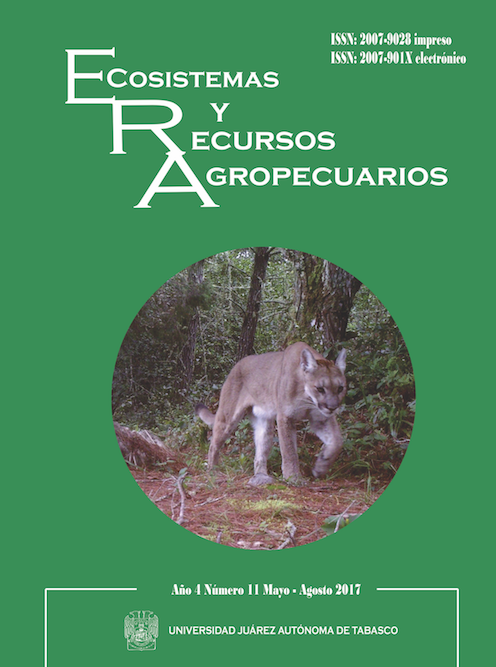Reproductive biology of the freshwater drum Aplodinotus grunniens in Tabasco, Mexico
DOI:
https://doi.org/10.19136/era.a4n11.973Keywords:
Fishery biology, reproduction, Usumacinta RiverAbstract
Aplodinotus grunniens supports a sustained artisanal shery in the Usumacinta River; however, there are few studies to understand the population dynamics of the species. Relevant aspects of the reproductive biology were documented over an annual cycle, using 593 specimens captured with seine nets. The results indicate that females had a median TL of 32.05 cm, while males had 29.71 cm. The estimated sex ratio was 1.2:1 (males: females). The length-weight relationship showed signi cant difference between sexes, observing an allometric-type growth represented by TW=0.0013(TL)3.5985 with 89.17 % of the data variability explained by the model. Gonadosomatic index (GSI) in females was higher in September (4.29), with males displaying a higher GSI in October (1.02). The highest HSI increase in females was observed in October (1.0). The estimated relative fecundity was 138.74 (± 74.30) oocytes/g of female weight. The macroscopic analysis of gonads indicates that the highest frequency of mature females occurs in June (75 %), while in males it takes place in March and June (35 %). The estimated L50 for females was 31.89 cm (TL) and 28.78 cm (TL) for males. Though A. grunniens reproduces throughout the year, reproductive peaks coincide with the period when the river level decreases, and shing increases considerably. Hence, preventive measures must be applied in regards to the size of the species at capture and the exploitation volumes of this resource.
Downloads
Published
Issue
Section
License
Aviso de copyright
Los autores que se envían a esta revista aceptan los siguientes términos:
una. Los autores conservan los derechos de autor y garantizan a la revista el derecho a ser la primera publicación del trabajo con una licencia de atribución de Creative Commons que permite a otros compartir el trabajo con un reconocimiento de la autoría del trabajo y la publicación inicial en esta revista.
B. Los autores pueden establecer acuerdos complementarios separados para la distribución no exclusiva de la versión del trabajo publicado en la revista (por ejemplo, en un repositorio institucional o publicarlo en un libro), con un reconocimiento de su publicación inicial en esta revista.
C. Se permite y se anima a los autores a difundir su trabajo electrónicamente (por ejemplo, en repositorios institucionales o en su propio sitio web) antes y durante el proceso de envío, ya que puede conducir a intercambios productivos, así como a una cita más temprana y más extensa del trabajo publicado. (Consulte El efecto del acceso abierto).

